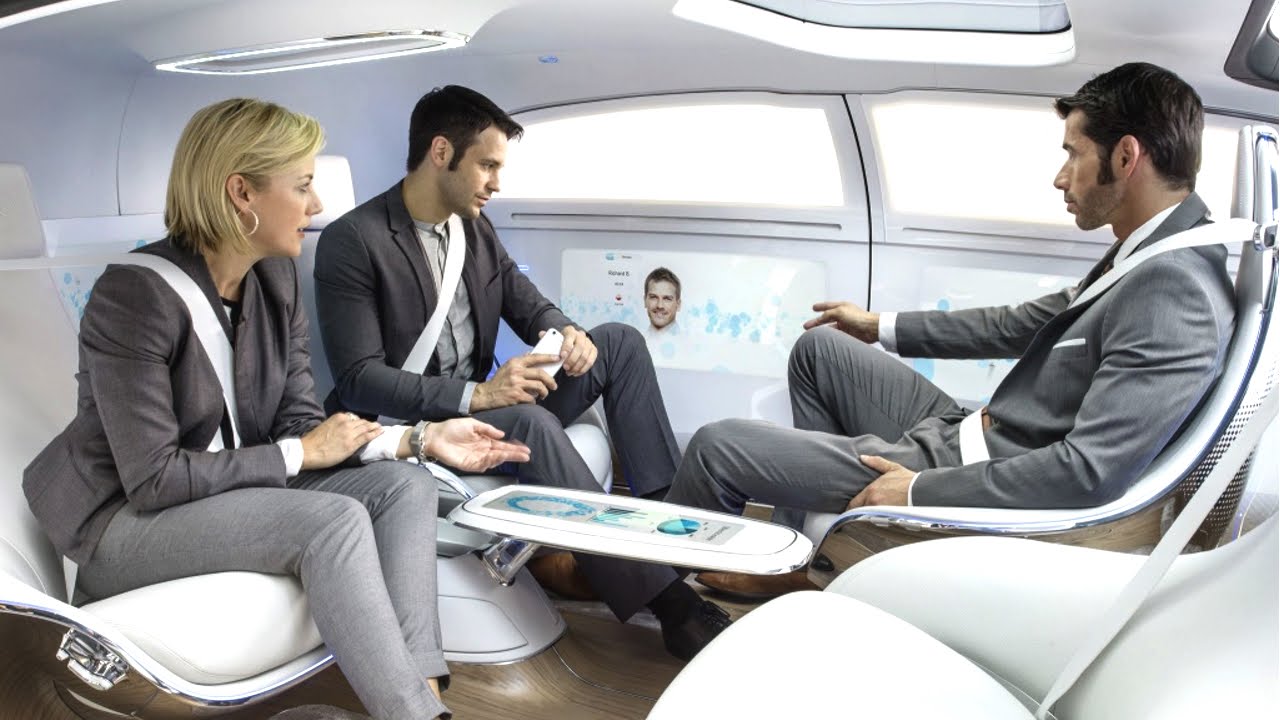
Here it comes. It is the biggest economic disruption since the World Wide Web was launched on the back of the developing internet in 1992. Maybe bigger. Autonomous transportation in all its forms: cars, trucks, industrial equipment, even trains and planes, will change the world in ways we can’t even comprehend. McKinsey agrees:
Self-driving cars aren’t on the road yet. But when they get there, you can be sure they will have a major impact on the economy and society as a whole.
…in the future, the technology will free up huge amounts of parking space, reduce auto accidents, and give people more time to consume TV shows, movies, and digital media. Autonomous vehicles will also change how we insure ourselves and decimate jobs in the logistics industry.
There are many predictions on how autonomous vehicles will impact society and our global economy, assuming that all countries will adopt this technology simultaenously. I have my favorites and I believe autonomous transportation is but one of many seismic technological changes that will impact society over the next 50-75 years, eventually obsoleting the idea of labor altogether and requiring a complete rethinking of free market economics. Here are some of the predictions from the McKinsey study:
In the first phase of change, up to 2023, McKinsey expects to see autonomous vehicles (AVs) in controlled environments (like mines) and in some commercial transport. Manufacturers will be forced to take a clear position on the future of AVs or risk being left behind.
In the next phase, up to about 2037, we’ll start to see AVs fully adopted. That will have consequences for the insurance industry. “Insurers might be required to shift their main goal from covering private customers from risk tied to ‘human error’ to covering [manufacturers] and mobility providers against ‘technical failure,’” McKinsey says.
Left out of this prediction, is that not only will the insurance industry be greatly impacted by the loss of all the insurance fees and claim management for driver-caused accidents, but all the related industries will be greatly impacted if not destroyed: tow trucks, highway patrol, collision repair shops, hospital emergency rooms, taxi drivers and newly minted Uber and Lyft drivers, truck drivers, Amazon/UPS/Fedex delivery drivers. Highways and parking ramps will no longer require expansion reducing the need for construction workers and construction equipment and on the list of eliminated jobs grows. Literally millions of jobs will be displaced in America and hundreds of millions of jobs around the world. But this is just the beginning of this mega-quake.
After that, things really start getting interesting. McKinsey says we’ll all have an extra 50 minutes per day for work or relaxing because we won’t have to drive ourselves somewhere (kind of like users of public transit mostly already have). We’ll have 61 billion extra square feet of parking space, partly because AVs will park consistently and closer together than now. And, automation will make for safer driving, with savings of up to $190 billion a year, mostly from reduced health care costs.
I have argued that the robotics and artificial intelligence (AI) industries will affect the world in just as profound a way. We could even look at the autonomous vehicle as another form of specialized robot. That is its future. Within this 50-75 year time frame, robotics will practically eliminate work / labor as we know it, both in the manufacturing and service sectors. There will still be jobs designing robotics and other automation technologies. There will still be jobs managing those technologies and their “sale” in the marketplace. But most employment will be for the purpose of recreation and artistry, what robots will not do well for at least the next 100 or more years.
In turn, these changes will provide opportunities for other industries. For example, the new in-car media market will be worth more than $5 billion a year. And AVs will serve as platforms and precursors for all sorts of other robot technologies for end-consumers.
Here is a great video on Youtube on the Future of Transporation
One of the more significant change agents and empowering technologies in this technological revolution is Lidar. Light Detection and Ranging technology has been around for at least 40 years. It started its life as a “rastering” laser used for bar code reading, using mechanical spinning mirrors to scatter the laser beam in a predictable way. The same grocery store checkout technology that emits a laser beam in multiple directions scanning boxes and bags is used to measure range and direction creating a laser form of radar, which is the microwave or radio wave equivalent. But Lidar has many advantages over radar by its intensity, ability to penetrate water droplets and ice crystals which easily reflect microwaves, and its speed and accuracy. Lidar is the ultimate solution for automated vehicle navigation surpassing by far the ability of the human eye for accuracy and dependability. From Wikipedia is the following summary of the technology:
In transportation systems, to ensure vehicle and passenger safety and to develop electronic systems that deliver driver assistance, understanding vehicle and surrounding environment is essential. Lidar system plays an important role in safety of transportation systems. Lots of electronic systems which add to the driver assistance and vehicle safety such as Adaptive Cruise Control (ACC), Emergency Brake Assist, Anti-lock Braking System (ABS) depends on the detection of vehicle environment to act autonomously or semi-autonomously. Lidar mapping and estimation achieve this.
A Sunnyvale California startup company, Quanergy, leads the race to find the most accurate and cost effective solution to vehicle autonomy. In a recent automotive conference called Collission 2017, Louay Eldada, CEO and Chairman of Quanergy, and inventor of the solid-state Lidar, discussed the coming technology wave and how it will change everything in society.
https://www.youtube.com/watch?v=8C652v-H6nI&t=994s
Recent Comments